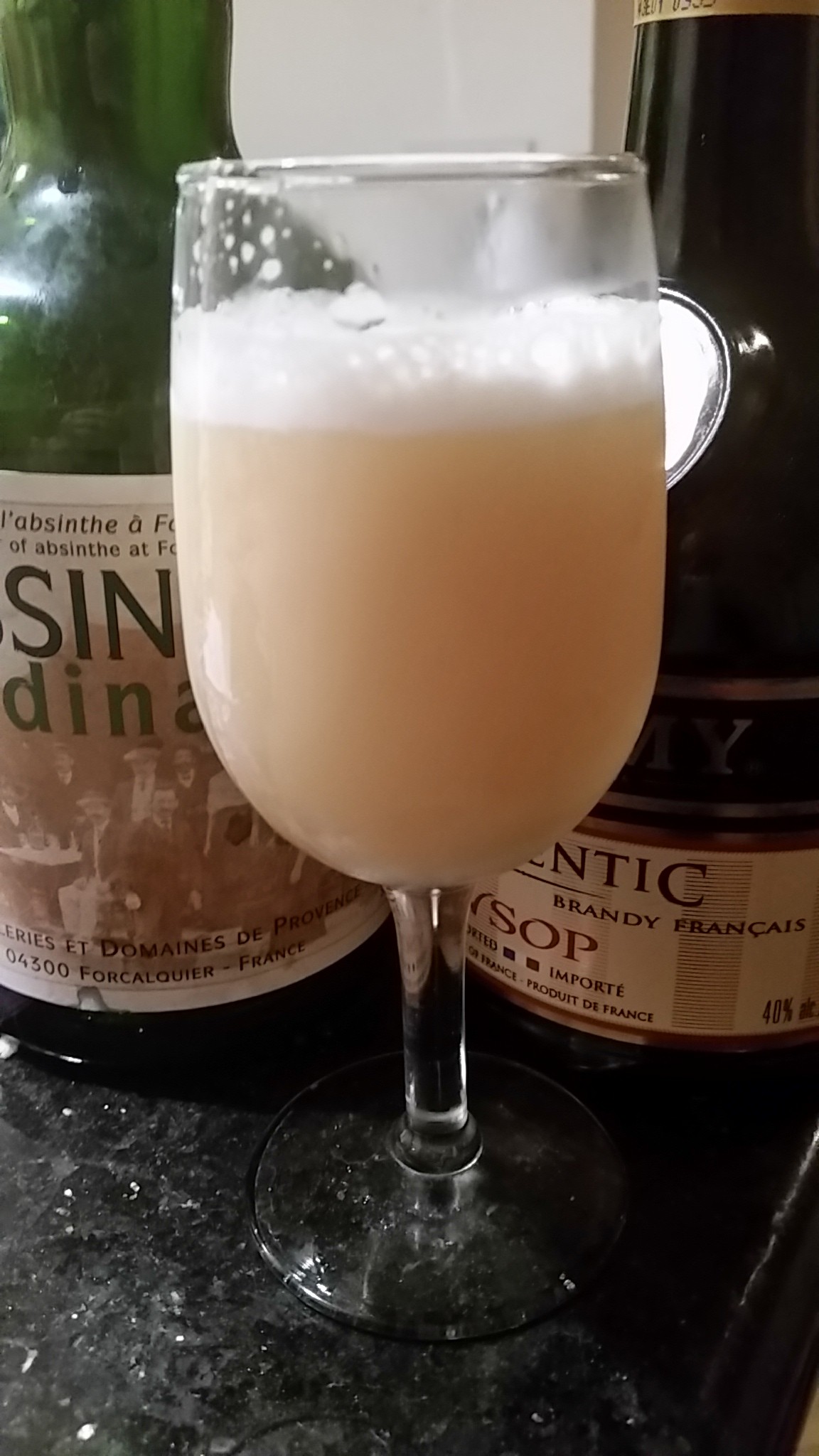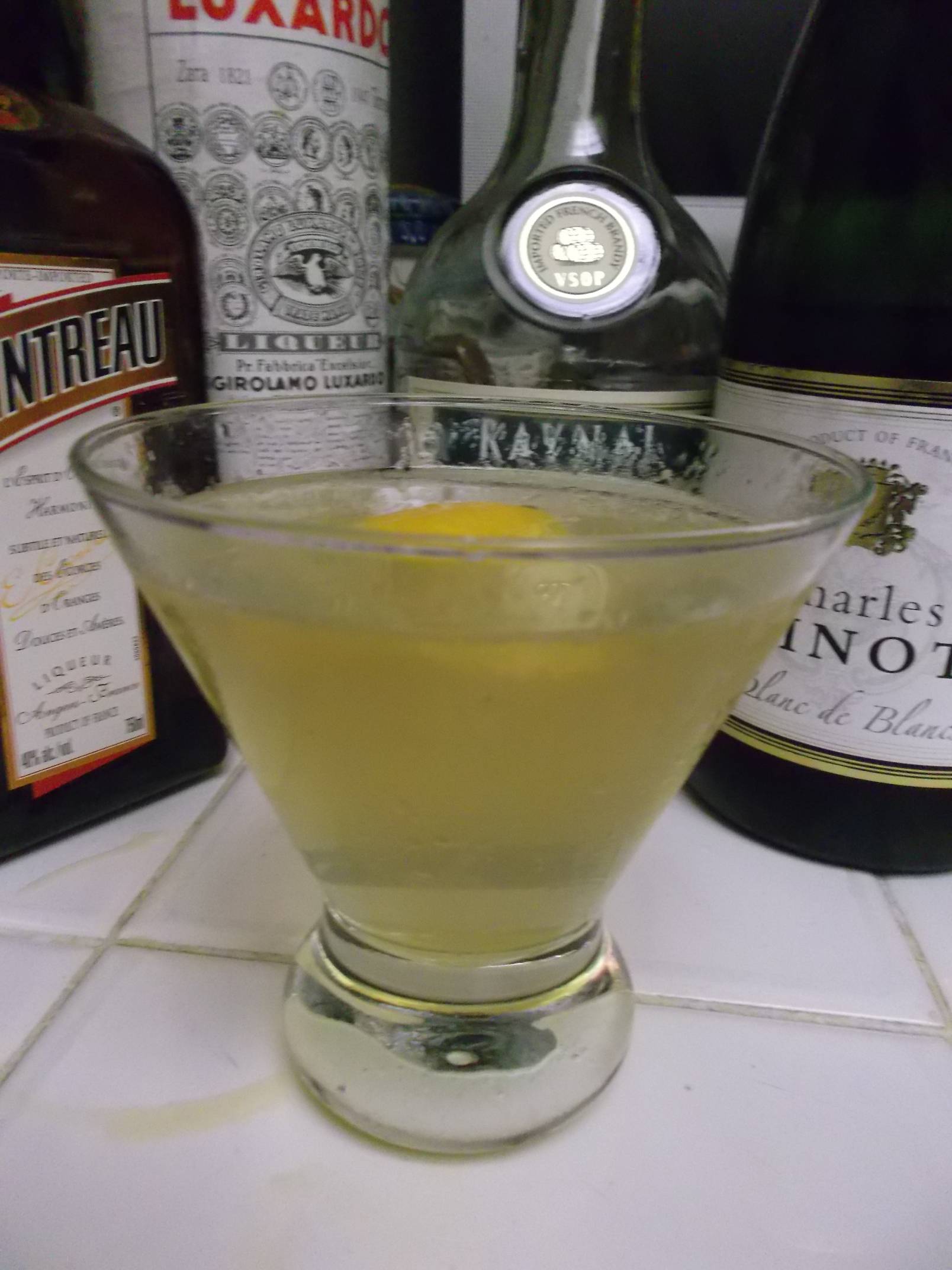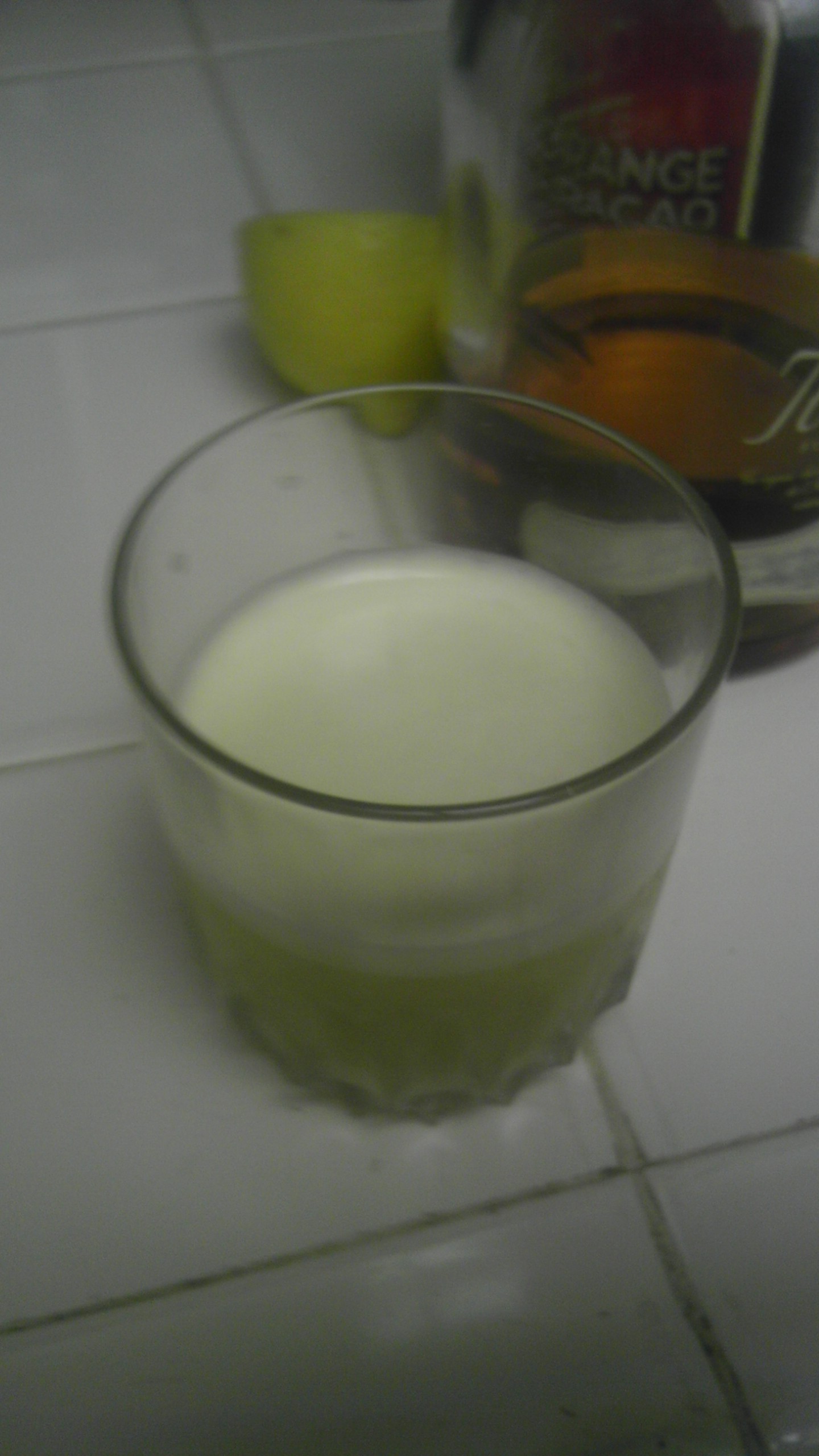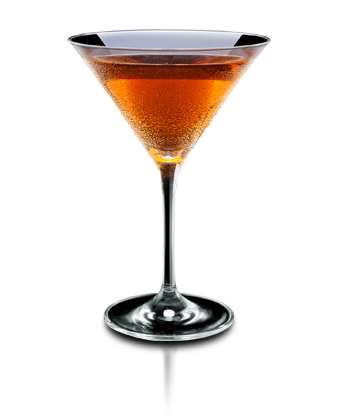Drink of the Week: The Round Robin
 Are you into absinthe? I’m definitely not averse to it as a little-goes-a-very-long-way ingredient in a numerous drinks, but I can’t say that I’m a fan of it in it’s classic mode of preparation. It’s not just it’s strength and bitterness, it’s the fact that I’m not even a fan of licorice candy, let alone industrial-strength anise and fennel.
Are you into absinthe? I’m definitely not averse to it as a little-goes-a-very-long-way ingredient in a numerous drinks, but I can’t say that I’m a fan of it in it’s classic mode of preparation. It’s not just it’s strength and bitterness, it’s the fact that I’m not even a fan of licorice candy, let alone industrial-strength anise and fennel.
On the other hand, if there’s one ingredient I’ve found in my alcoholic wanderings that can transform a potentially repulsive drink into a taste treat, it’s a raw egg white, properly emulsified. This week’s drink, which comes I know not from where, puts that theory to the test in a big, big way. Let’s get this wormword and poultry-product party started.
The Round Robin
1 ounce brandy
1 ounce absinthe
1 egg white
1 teaspoon superfine sugar
Combine all the ingredients in a cocktail shaker. To emulsify the egg white, shake vigorously without ice. Then, add ice, shake vigorously again, and strain into a wine glass. Toast the legalization of absinthe back in the mid-2000s when people started to figure out that the stuff is no more (or less) dangerous than other types of booze. Prohibition never works.
****
Well, I guess this is another vote from me for the miraculous properties of raw eggs in cocktails as, on balance, I really like this drink. In fact, I like this drink so much that, even though I’d have a hard time finding a difference between good absinthe and bad absinthe, I’d almost spend the $70 or more it takes to buy some of the putative good stuff just to try it in a Round Robin.
Why? Well, just as an Old Fashioned humanizes even a very strong bourbon or rye, the Round Robin actually makes the bitter licorice on steroids flavor of absinthe not only tolerable but fascinating.
While I only have one brand of absinthe on hand and it’s not supposed to be that good — I gather than aficionados of the wormwood liquor find Absinthe Ordinaire to be appropriately named at a mere 92 proof — I did try different brandies out. Killing my bottle of St. Remy worked just fine but a Ile de Ré Fine Island Cognac worked even better.
However, the one big change I made from my usual habit was was using a pasteurized brand of egg white I picked up at my local Trader Joe’s (3 tablespoons of the stuff is said to approximate one egg white). While the the seemingly low viscosity of the stuff looked suspect, the fact of the matter is that it worked just as well as the stuff you get directly from the chicken…and I know my friend from the local health department would agree that salmonella is about the last thing I need right now. I’m usually not one to worry about such stuff, but if you’d been through as many perfect storms I’ve been through over the last six months, you might be a bit extra cautious yourself.
Coming up next: An adventure with pasteurized whole eggs and a coffee drink with zero caffeine and no decaffeinated coffee, either.
You can follow us on Twitter and Facebook for content updates. Also, sign up for our email list for weekly updates and check us out on Google+ as well.
Posted in: Food & Drink, Lifestyle, Vices
Tags: absinthe, Absinthe Ordinaire, brandy, cocktails, cognac, Drink of the Week, Happy Hour, Ile de Ré Fine Island Cognac, Round Robin

 What are you willing to give up for a cocktail? If you live in Los Angeles, the answer for the casual fancier of serious mixed beverages might be as high as $17.00 in some joints. If you’re one of the people who actually makes his living trying to make really good cocktails, however, the price might be a little higher still.
What are you willing to give up for a cocktail? If you live in Los Angeles, the answer for the casual fancier of serious mixed beverages might be as high as $17.00 in some joints. If you’re one of the people who actually makes his living trying to make really good cocktails, however, the price might be a little higher still. Like most Americans, I’m not exactly a polyglot. Four years of junior high and high school Spanish have been of great assistance in helping me to order items at taco trucks; three quarters of college French allow me to chuckle knowingly to myself when “merde!” is translated as “damn!” in subtitles. So, I can’t properly pronounce the name of the Vieux Carre, but I can tell you it means “old square.” That square, as it turns out, is off of Bourbon Street in New Orleans, and this is another fine cocktail associated with America’s most intriguing cocktail capital.
Like most Americans, I’m not exactly a polyglot. Four years of junior high and high school Spanish have been of great assistance in helping me to order items at taco trucks; three quarters of college French allow me to chuckle knowingly to myself when “merde!” is translated as “damn!” in subtitles. So, I can’t properly pronounce the name of the Vieux Carre, but I can tell you it means “old square.” That square, as it turns out, is off of Bourbon Street in New Orleans, and this is another fine cocktail associated with America’s most intriguing cocktail capital. A coworker of mine pointed out to me recently that a good chunk of my post on
A coworker of mine pointed out to me recently that a good chunk of my post on  It’s not exactly a secret around here that I greatly lean towards cocktails as opposed to drinking even truly fine spirits straight. Still, it’s fairly obvious even to me why the best cognacs and other high end brandies are among the most popular of all beverages to enjoy neat. Certainly that applies to the
It’s not exactly a secret around here that I greatly lean towards cocktails as opposed to drinking even truly fine spirits straight. Still, it’s fairly obvious even to me why the best cognacs and other high end brandies are among the most popular of all beverages to enjoy neat. Certainly that applies to the 








